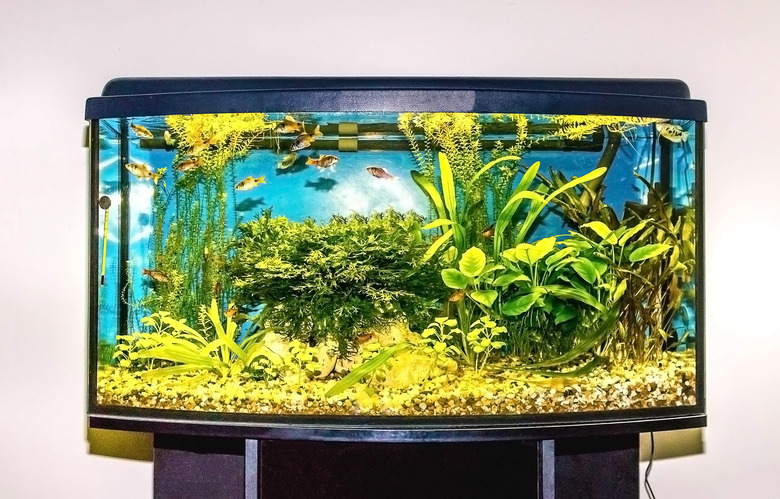Fish Tank Bubbler: What Does A Bubbler Do In An Aquarium?
An aquarium bubbler, also known as an air stone, adds beneficial bubbles to the aquarium water, thanks to an air pump connected via flexible tubing. These bubbles help oxygenate the water as they pop on the surface, improving the living conditions for the fish, plant life, and other creatures in the tank.
The benefits of added oxygen
The benefits of added oxygen
As an aquarium air stone releases bubbles, it helps keep the water from becoming stagnant or even toxic. Waste matter in a fish tank easily gets out of control in some situations, such as overfeeding or keeping too many fish in a small aquarium. As that waste matter builds up, so does the amount of bacteria that feeds upon it. Even though these bacteria are essentially filtering or cleaning up the "trash" in the tank, they use up some of the oxygen in the water, making it harder for fish and other aquarium life to survive. The air stone bubbler keeps a steady stream of air, which contains oxygen, flowing into the water, allowing the natural bacterial filtration to take place without starving the fish of oxygen. Like humans, fish and other aquarium lifeforms require an ample supply of oxygen to thrive.
Added beauty and sound
Added beauty and sound
The bubbles emitted from an air stone can also be used for decorative purposes in the fish tank. Bubble curtains and walls placed towards the back of the tank add streaming "stripes" of bubbles behind the fish. Other air stones can be placed near decorative aquarium treasure chests or clam shells that open when bubbles arise. The sound of the constant bubbling can also be soothing, much the way some people find the sound of a fountain or rushing stream of water enjoyable.
Fish tank air pump supplies
Fish tank air pump supplies
No matter what style the air stone or bubbler, its bubbles come from air supplied by the fish tank's air pump. Pick an air pump suitable for the size of your aquarium, if your aquarium doesn't already have one. Read the packaging on the pump to determine an appropriate model that is strong enough for the amount of water in your tank. Adjustable models allow you to speed up or slow down the bubbling to the desired level. Many pumps do not include tubing or the bubbler, so you'll have to pick those out as well. Purchase enough airline tubing to run from the pump to your aquarium bubbler, allowing enough extra for the tubing to bend over the top of the tank and along the bottom to the bubbler connection. Most airline tubing is sold with a standard inner diameter of 3/16-inches so you generally won't have to worry about picking the wrong tubing as long as you buy the material from a fish-tank supply shop.
Setting up the aquarium bubbler
Setting up the aquarium bubbler
Connect one end of the tubing to the bubbler, then place the bubbler in the desired position in the tank. Run the tubing along the bottom of the tank and along the back corner closest to the pump, positioned near the aquarium. Suction cups designed for aquarium use can help keep that tubing in place. Connect the opposite end of the tube to the pump. Feel free to trim excess tubing with a craft knife. Plug the pump in and turn it on. If bubbles rise up through the air stone, you've connected everything properly. If not, reconnect the tubing at both ends.
Cleaning a fish tank bubbler
Cleaning a fish tank bubbler
Over time, the air holes in a bubbler can clog due to mineral deposits and debris buildup. If your bubbler doesn't bubble the way it used to, turn off the pump, remove the bubbler from the hose and rinse it in tap water, scrubbing it with a nylon brush. Soak the bubbler overnight in peroxide, rinse and scrub it again, then dry it off before returning it to the tank. If the deposits look white and chalky like mineral deposits on a shower head, soak the bubbler in white vinegar for several hours, then rinse it thoroughly before returning it to the tank. Do not soak a bubbler made of any type of actual stone, as vinegar may corrode it. For best results, read the care instructions included with the bubbler to determine the ideal cleaning method for that bubbler model.
